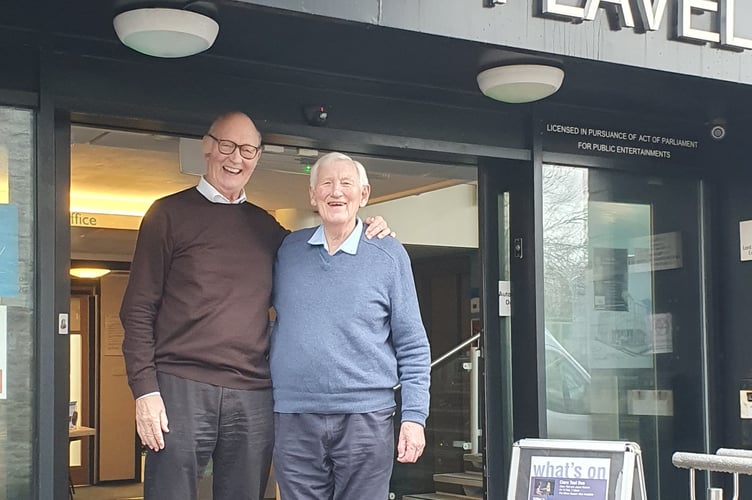Two key figures linked to Dartmouth’s popular Flavel Arts Centre have spoken about the challenges of getting it built 20 years ago.
The multi-purpose centre, which hosts film, music and comedy events, was officially opened by the Duchess of Gloucester on February 26, 2005.
To mark the Flavel’s 20th ‘birthday’ celebrations there will be a series of events planned throughout the year, the first of which will be hosted by the centre’s patron and former TV news presenter, John Suchet OBE.
The glitz is in stark contrast to the difficulties founders such as John Mitchell had to overcome to get the centre constructed.
“We didn’t know until the last moment that we’d made it. We faced so much opposition and had so many delays,” said Mr Mitchell, who is now 86-years-old.
The idea of having an all-encompassing arts centre fit for the 21st century was first suggested in the 1990s, but problems plagued the project from the start.
They met opposition from a host of bodies, including the Millennium Commission, the local council and South Hams District Council (SHDC), which poured cold water on the project, suggesting among other reasons that it lacked public support.
“In those days we had 6.5 per cent building inflation and the building was £1.5m. The local council donated £100,000, but they shilly-shallied so much that the delay in deciding not to come in cost us a very large part of that,” Mr Mitchell added.

To come up with the rest of the cash, residents mobilised to raise funds, and thanks to the widespread coverage that appeared in the Dartmouth Chronicle, the public was kept continually informed of their campaign, Mr Mitchell said.
Protest marches were organised, but a particularly memorable boat ride to Follaton House in September 1999 proved to be a game changer.
More than 100 people boarded the Baltic Star and sailed up river to SHDC’s premises to meet dozens of other protestors in a bid to swing the debate in their favour.
“We surrounded Follaton House while they were having their lunch. In all the history of the council they'd never known anything like it. I remember councillor Geoffrey Date being very supportive,” he said.
The centre’s current chair, Ann Green, said that many officials viewed the project as being overly ambitious for a town the size of Dartmouth.
“The view was that a town like this probably should be spending the money on something else,” she said.
The building, designed by architect Tim Williamson, finally got the go-ahead on the site of an old fire station.
“It has never, to this date, received any local or national government funding. All the money has been acquired by revenue from performances, donations, legacies, fundraising and grants,” Ms Green stressed, adding that the centre now faces other challenges, such as attracting newer audiences and managing higher running costs.
As for Mr Mitchell, the forthcoming anniversary represents a lot more than just the celebration of its construction.
“People don't really understand how isolated we are in Dartmouth – we’re the end of the line, and to get anywhere is quite a drive. This is why we had such an enthusiastic following to build the centre.”




